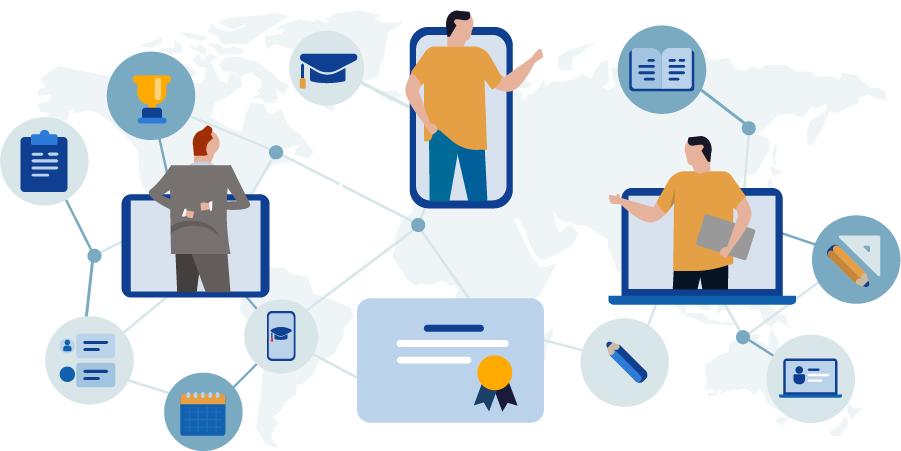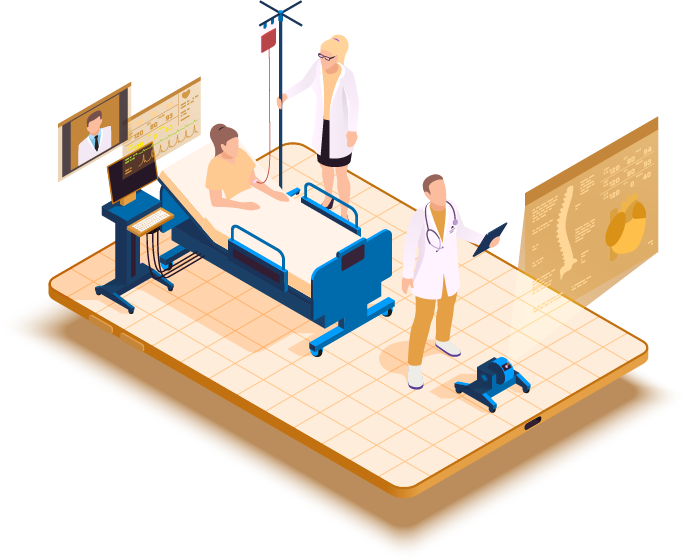Continuing Professional Development for healthcare professionals is important for them to stay up to date with the latest research and development in their industry. With modern diseases and difficulties, revolutionary ways are required to treat them.
Doctors, nurses or other medical practitioners cannot pursue without continuing education. They must learn new technologies and methods to provide better patient care. Continuing education in the field of healthcare is termed CME (Continuing Medical Education).
Some of the Emerging Trends in CPD for Healthcare

Clinical Competence
Clinical competence is a key emerging trend in healthcare, driven by the need for continuous improvement in patient care and safety. As medical technologies and treatments rapidly evolve, healthcare professionals must stay current with updated knowledge and skills.
The emphasis on evidence-based practice and the complexity of modern healthcare, which necessitates effective teamwork and communication, reinforce this trend.
Regulatory bodies now often mandate CPD focused on maintaining clinical competence to ensure high standards of care. This commitment reflects the healthcare industry’s dedication to providing safe, effective, and up-to-date patient care.
Patient-centred Care
The growing trends in CPD for healthcare cannot go unnoticed and one of these emerging trends is patient-centred care.
Patient-centred care can be simply defined as providing healthcare as per the patient’s will and involving them in every decision regarding their health. Patient’s values, preferences and cultural traditions are respected.
CPD Programmes focus more on strategies like active listening techniques, empathy training or even collaborative decision-making. Learning these strategies allows medical professionals to better understand their patients’ needs hence promoting better healthcare.


Technology Enabled Learning
With the technological advancements in the industry, healthcare individuals can now participate in online platforms for their continuing learning.
Doctors have a hectic schedule and devoting their time to CPD can be difficult. This is where online platforms come in handy and therefore have become increasingly popular among healthcare professionals. The platforms may include webinars, mobile apps or other online learning platforms.
A major advantage of them is that multiple CPDs are available online, no matter which branch of medicine or healthcare you belong to and you can access them from anywhere in the world. This allows them to progress at their own desired pace; they can easily revisit chapters/modules, pause and rewind and adjust the learning accordingly.
Another good thing is that they are cost-effective compared to in-person CPDs as handouts and textbooks are available online which makes it even more economical for those with a limited budget.
One of the most renowned organisations in the UK is elfh (e-learning for healthcare) – ‘an NHS England programme in partnership with the NHS and professional bodies.’ Healthcare professionals can benefit from the flexibility that e-learning offers.
Telemedicine
Telemedicine refers to the usage of technology in exchange for medical assistance and diagnosis. It can be in the form of texts, video calls or chats.
Although it removes the need to go to the doctor’s office, it doesn’t mean that patients shouldn’t go see a doctor.
For instance, COVID-19 made it difficult for people to visit their doctors and therapists, making telemedicine a necessity and popular.
As a growing trend in healthcare, it is also highly beneficial for people who cannot travel or live in rural areas, easily consulting a doctor for non-emergency regular check-ups and follow-up appointments.
For doctors, they must have the basic knowledge to use the technology effectively how to check patients online and they can do this with the help of CPD.
Participating in CPDs related to telemedicine can help medical professionals use the technology effectively.


Virtual Reality (VR) and Augmented Reality (AR)
Virtual Reality (VR) and Augmented Reality (VR) are one of the fun ways to engage in learning. Virtual training helps create an immersive reality where learners can perform various tasks or procedures in a controlled environment.
For instance, it can used to train a professional how to perform complex surgeries on virtual patients without any risk of an error. Not only that, engaging in CPDs on Augmented Reality (AR) and Virtual Reality (VR) can help doctors learn about 3D technology and how to choose it in different operations.
Simply put, the technology has massive benefits which makes it easy for healthcare professionals to train in their respective fields. It is a powerful tool that is shaping the future of the healthcare industry rapidly.
What are Some Examples of CPD for Healthcare Professionals?
There are many CPD options available and the good thing is that you can choose any CPD event or activity based on your preferences, needs and demands.
Some of the most common CPD examples are:
- Formal conferences
- Seminars and webinars
- Reading and reviewing healthcare publications – papers, magazines, research articles or journals
- E-learning courses
- CPD-certified events
- News articles
- Podcasts
- Case studies
- Industry updates
Conclusion
Continuing Professional Development (CPD) is a cornerstone of healthcare, enabling professionals to stay at the forefront of advancements and provide exceptional patient care. With trends like clinical competence, patient-centered care, technology-enabled learning, telemedicine, and the integration of immersive technologies like VR and AR, CPD is evolving to meet the demands of modern healthcare.
By engaging in diverse CPD activities—ranging from conferences and webinars to e-learning and research—healthcare professionals can enhance their skills, improve clinical outcomes, and adapt to emerging challenges in the field. This not only ensures personal growth but also contributes to the overall improvement of healthcare systems.
Investing in CPD is not just about keeping up with the latest trends; it’s about empowering healthcare professionals to shape the future of medicine and deliver unparalleled care to patients.
























